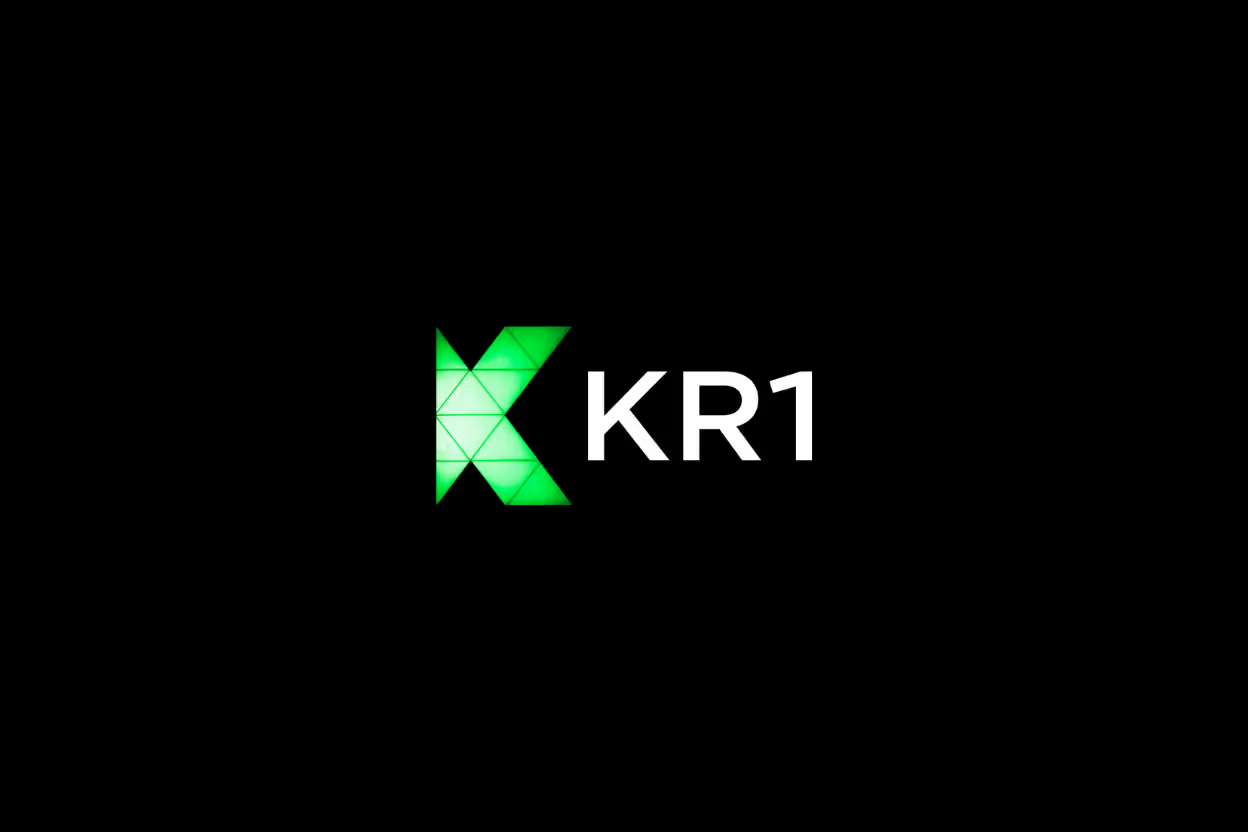Reputation has become a measurable asset for every serious crypto and Web3 leader. As digital communities evolve, the value of trust and credibility now rivals technical innovation or token economics. Real-world losses from reputational hits can cascade across entire portfolios, not just single brands or teams.
Crypto founders, blockchain teams, and VCs are learning that isolated PR fixes won't stand up to the fast-moving chaos of digital markets. The smartest players now treat reputation just like financial capital—tracking, defending and building it across multiple ventures at once. Could tracking social sentiment, regulatory image, and online narratives be as important as tracking prices or protocol adoption? Is your portfolio protected against the next cycle of FUD or coordinated social attacks?
Systematic reputation management is quickly shifting from PR afterthought to core portfolio strategy. In an industry defined by volatility and digital scrutiny, how long can any investor afford to ignore reputation as a real, quantifiable asset?
Reputation: More Than an Intangible Asset
In crypto and Web3, reputation goes far beyond a nice-to-have or a vague positive vibe. It is now trackable, actionable, and often quantifiable—much like the digital assets these communities are built around. For founders, VCs, and protocol teams, reputation can unlock opportunities, prevent disasters, and shape the outcomes of everything from funding rounds to regulatory conversations. If reputation is ignored or poorly managed, even the sharpest technology or soundest economic model can collapse under pressure from loss of trust.
Why Reputation is the Currency of Trust
Trust drives every transaction, partnership, and project in crypto. Unlike traditional business, where you might meet face-to-face or rely on established brands, Web3 success hangs on social proof and verifiable achievements:
- Investors scrutinize founder or protocol reputation before parting with capital.
- Developers join teams whose past contributors have proven reliable.
- Users adopt products and protocols they've seen withstand public scrutiny and attack.
Have you ever wondered why two similar projects can achieve radically different outcomes with the same resources? Often, the only gap is reputation—how the market perceives the team, the code, or the token’s history.
From Narrative to Numbers: Quantifying Digital Reputation
Once reputation was just word of mouth. Now, every on-chain achievement, public contribution, and community endorsement leaves a permanent record. Platforms like Collab.Land, Ethos, and decentralized identifiers (DIDs) are turning these digital footprints into reputation scores, badges, or NFTs.
This quantification matters because:
- Protocols can measure reputation across multiple wallets, projects, or DAOs.
- Founders can verify claims of past performance and active contributions.
- VCs can assess risk in ways that were impossible in an anonymous, pseudonymous market.
Would you trust a founder who’s shipped three successful protocols, all visible on-chain, over one with no public record? Most do—because the data never lies.
Reputation as Portfolio Insurance
Think of reputation like insurance for your entire crypto portfolio. One FUD campaign, coordinated social attack, or regulatory rumor can erase millions in value. Reputation defense protects multiple investments—not just at the brand level but at the founder, developer, and even community tier.
Consider these points:
- Bad reputation at the protocol level can spill into every project a team touches.
- A trusted reputation acts as a shield, helping portfolios weather unfounded claims or market-wide panic.
- Proactive tracking of on-chain sentiment, governance engagement, and public discourse gives you a radar against incoming threats.
Is your startup’s or investment vehicle’s trust factor strong enough to withstand coordinated attacks or social engineering? If not, reputation becomes the first asset exposed in a downturn.
Reputation and Identity: The Future is Interoperable
Unlike traditional web identities, decentralized reputation is portable. If a founder builds trust in one protocol, that record can travel with them, thanks to on-chain data and interoperable standards. Credentials, endorsements, and proof of contribution can unlock:
- Access to exclusive DAO votes, governance rights, or private communities
- Enhanced borrowing or fundraising options based on verified reputation
- Collaboration opportunities with top partners, backed by transparent histories
What would it mean if your reputation could unlock economic upside, not just warm feelings? In this future, reputation becomes an asset as reliable as any ERC-20 token—portable, tradable (with care), and easily validated.
The Questions Every Portfolio Leader Should Ask
Building a defense around this new asset class starts with curiosity and a willingness to treat reputation as a quantifiable resource. Before moving on, consider:
- Which on-chain reputation metrics matter most for your projects?
- How quickly could a negative shift in public sentiment impact your holdings?
- Are you tracking, quantifying, or defending reputation as systematically as you would cashflow or liquidity?
Stay alert. In Web3, reputation is not just the story people tell, but the proof sealed forever in code.
Building a Framework for Portfolio-Wide Reputation Defense
To protect reputation as a real asset, founders and investors need a structured, tech-powered framework. Old-school PR fixes fall short when every tweet, review, or governance vote leaves a public footprint. Now, the smartest crypto and Web3 leaders use advanced analytics and live dashboards to track risks, spot trends, and take action before damage spreads across their entire portfolio.
Real-time monitoring, AI-driven sentiment analysis, and easy-to-read dashboards sit at the heart of this new strategy. These tools turn scattered data from across markets, social channels, and on-chain records into decision-ready insights. How do you know when a whisper turns into a full-scale crisis, or which project might drag down the rest? The right metrics and clear dashboards answer these questions before anyone else can act.
Reputation Impact Metrics and Performance Dashboards: Real-Time Visibility and Control
You can’t defend what you can’t measure. To see the pulse of reputation across a portfolio, smart teams deploy a mix of AI tools and custom dashboards designed for today’s digital-first environment.
Modern performance dashboards bundle the most relevant metrics in one view, including:
- Reputation Scores: A composite number based on sentiment, coverage, and influence. It acts like a credit score for your brand or team, supporting side-by-side comparisons within your portfolio.
- Sentiment Analysis: AI tracks tone (positive, neutral, negative) in real time across social media, news, and forums. If sudden mood swings appear, you’ll get alerts before reputational threats snowball.
- Impact Scorecards: These break out which events—say, a security incident or a major partnership—move the needle on public trust. Scorecards help teams measure which actions trigger positive or negative shifts.
- Public Trust Indexes: Broader indexes aggregate public and community opinion to assess how much people trust your portfolio versus competitors.
- Share of Voice: Tracks how often projects are mentioned in key channels—the more consistent and positive your presence, the healthier your digital reputation.
These dashboards aren’t just pretty charts. They’re command centers for decision-making. With built-in anomaly detection, teams can spot and respond to spikes in FUD, coordinated attacks, or unexpected media attention days ahead of slower competitors. Can you imagine knowing which protocol faces a reputational storm before it shows up in price action?
Key questions founders and VCs often ask include:
- How can AI analytics separate legitimate feedback from coordinated FUD?
- What kind of alerting ensures you’ll never miss a rising crisis?
- How granular should metrics get—project, team, protocol, or community level?
Leading analytics suites now offer interactive filtering, letting you zero in by channel (Telegram, Twitter, Discord), region, or even timespan. This helps teams avoid drowning in noise and spot only what really matters.
Some dashboards even let teams compare real-time reputation against direct competitors, adjusting strategy based on live feedback. This kind of visibility shifts reputation defense from reactive to proactive—saving both capital and credibility in the process.
By relying on clear metrics and intuitive dashboards, portfolio leaders avoid surprises and keep their teams prepared. In crypto and Web3, reputation risks rarely announce themselves. With the right framework and tools, they don’t have to.
Quantifying and Monetizing Reputation in Crypto & Web3
Reputation is now an asset in Web3 that can be measured, traded, and even monetized. Decentralized projects use public on-chain data to score trust and influence, turning actions, contributions, and endorsements into portable digital signals. Tools and protocols have emerged to assign real value to these reputational footprints, often tracked by AI-driven systems that span Discord, Twitter, governance forums, and on-chain transactions. For crypto founders, investors, and teams, understanding how reputation risk moves across a portfolio is essential to protect both direct and indirect asset value.
Reputation Risk and Diversification: Why a Bad Reputation Hurts Every Asset
A poor reputation in one project rarely stays contained. In the interconnected world of crypto, negative press, poor community sentiment, or regulatory warnings can create a ripple effect that targets every asset with shared leadership, brand, or technical foundation. Here's how it plays out:
- Regulatory Scrutiny: If one token or protocol faces regulatory pushback, exchanges may flag all related assets as higher risk. This extends to projects run by the same founders or backed by the same VCs. Even the suggestion of legal trouble can spark a sell-off.
- Market Sentiment: Crypto moves at the speed of social sentiment. FUD (fear, uncertainty, doubt) spreads fast, dragging down not just the targeted token but companion projects and ecosystem coins. For example, if a DeFi protocol gets hacked, users often exit partner protocols too—regardless of technical safety.
- Token Pricing: Market makers, traders, and even DAOs factor reputation into how they price tokens. A portfolio hit by bad PR often trades at a discount, even if only one asset has direct troubles. Rumors or accusations can push an entire portfolio into a liquidity crunch or force defensive sales.
- Community Retention: Users and contributors want to back winners. A dip in the trustworthiness or competence of any core project or founder can drive developers, moderators, and even loyal holders to other ecosystems. The talent drain can be harder to reverse than a single price dip.
Practical examples help underline the risk:
- Ecosystem Meltdowns: When a major Layer 1 chain faces a hack or high-profile failure (think Terra/Luna), associated tokens, dApps, and even unrelated projects on the same stack can lose value overnight. Investors and users lump them together as “higher risk.”
- Founder Fallout: If a well-known founder is tied to a scam or regulatory issue, every project they've touched takes a credibility hit. Market pricing shifts even before facts are clear, penalizing honest projects by association.
- Regulation Waves: A regulatory action against one DeFi lending platform often causes withdrawal spikes from similar protocols—regardless of jurisdiction or technical differences. Competitors suffer from guilt by association.
These feedback loops show why reputation risk is a portfolio problem—not just a problem for one token or team.
When considering whether your portfolio is protected, consider a few common questions:
- Can negative sentiment around just one asset undermine confidence in other holdings?
- Are you tracking public narratives, not just financial metrics, to detect early signs of trouble?
- If your core team or brand is attacked, do you have diversification or defense in place to prevent value erosion across the board?
Treating reputation as a quantifiable, monetizable asset class means not only measuring it but diversifying and defending it actively. In crypto and Web3, reputation is contagious—good or bad. Effective portfolio management demands you treat it just like capital: tracked, protected, and grown with every decision.
Industry Practices and Case Studies
Reputation defense is now a top priority for crypto leaders, VCs, and founders. The most trusted brands in Web3 don't just talk about transparency—they back it up with systems and repeatable practices. How do leading companies manage reputation risks across portfolios? They blend audits, governance, strong community ties, and real-time transparency to shield both their assets and their investors. Below are proven tactics and real-world examples that show how systematic reputation management works in action.
Transparent Auditing and Governance
Teams that stand the test of time make their activity easy to track, both on-chain and off-chain. Public smart contract audits and open financial records signal to users and regulators that nothing is hidden. Established names like Zapper and tech service agencies document all development milestones, partnerships, and protocol upgrades. This level of transparency:
- Helps spot issues before rumors take hold
- Builds a public timeline of trust and delivery
- Makes it harder for bad actors to manipulate narratives
Many readers ask: Can audits really stop misinformation? They don’t guarantee perfection, but audits do raise the bar by making missteps visible—pushing teams to address problems early.
Real-Time Portfolio Monitoring
Platforms now use integrated analytics to track every part of their stack. Real-time dashboards cover price swings, cross-chain flows, and sentiment shifts across social and news channels. This approach helped Zapper streamline management of complex Web3 portfolios, as users could view assets, risks, and token exposures with one login. Key benefits include:
- Quicker detection of sudden FUD campaigns
- Ability to spot risky outflows or technical issues across all managed protocols
- Community-facing dashboards that inspire trust
Active monitoring also encourages faster responses when a single protocol faces attack or scrutiny. Why wait for a full-blown crisis to coordinate a response when you can track sentiment before it hits the price chart?
Compliance and Regulatory Integration
Trusted projects now align their internal controls with global regulations. Recognized players protect their portfolio reputation by working with regulated custodians, building privacy-preserving tech like zero-knowledge proofs, and securing clearances in major markets. For example, after high-profile failures like FTX, many blockchain organizations improved operational integrity by:
- Separating custodianship from trading and development
- Adopting formal compliance standards recognized by regulators
- Publishing real-time proof of reserves and open records on asset backing
One fair question: Does compliance slow Web3 innovation? It sets higher standards, but it also opens doors to new investors and partners who demand a safer market.
Community Attestations and On-Chain Reputation Scores
DAOs and decentralized communities increasingly rely on transparent voting, public endorsements, and credential verification. Projects like Collab.Land let communities assign badges tied to provable activity—reputation becomes both visible and portable. These practices:
- Give participants a clear say in project direction
- Reward engagement with digital credentials and unique access
- Deter manipulation, as the entire record is open for inspection
Another common inquiry: How do digital badges and scores change investment decisions? They add a layer of trust, clarifying who’s actually adding value to the ecosystem.
Case Study Snapshots: What’s Working
Looking for practical examples? Leading companies show what robust reputation management looks like in the field:
- Institutional Custodianship: After losses tied to laissez-faire exchanges, traditional funds shifted digital assets to regulated custodians, restoring investor confidence.
- Zapper’s Unified Dashboard: Zapper's platform gave users a full portfolio view—NFTs, DeFi, and tokens—backed by accurate on-chain data. This helped users assess risk across every wallet and protocol in seconds.
- Public Audits and Proof of Reserves: Major protocols responded to market skepticism with live audit feeds and reserve attestations, helping stem panic after industry shocks.
- DID and Privacy Tools: Teams used decentralized identity systems to balance transparency with user privacy, meeting stricter global rules while empowering users to retain control of their data.
When industry giants and newcomers both rely on the same open, trackable standards, they limit information gaps and reduce the risk of cascading reputation failures.
What to Take Away
These practices aren’t just checkboxes—they’re defenses against the next crash, hack, or rumor mill. If you’re responsible for a Web3 portfolio, ask yourself: How would your projects measure up under this kind of scrutiny? And what would it take to put these standards in place long before the next big story hits? The smartest founders and investors know reputation is protected not just by words, but by systems everyone can see and verify.
Conclusion
Treating reputation as a measurable, defensible asset puts crypto leaders ahead of coming risks. By using real-time metrics and adopting a portfolio-wide strategy, founders and VCs protect against sudden sentiment shifts, coordinated attacks, and regulatory headaches. This approach not only limits losses but also gives projects a clear edge when trust becomes scarce.
It’s time to ask: Are you monitoring your portfolio’s reputational health as closely as token value or compliance risk? If not, consider what a unified, tracked system could do to strengthen every asset you touch.
Those who build reputation defense directly into strategy will shape the next era of growth and credibility in Web3. Take a moment to reassess your current tactics, and prepare for trust to be your most valuable asset moving forward.
Thanks for reading. How are you measuring and defending reputation across your portfolio right now? Share your ideas or questions—your perspective helps lead the conversation.








